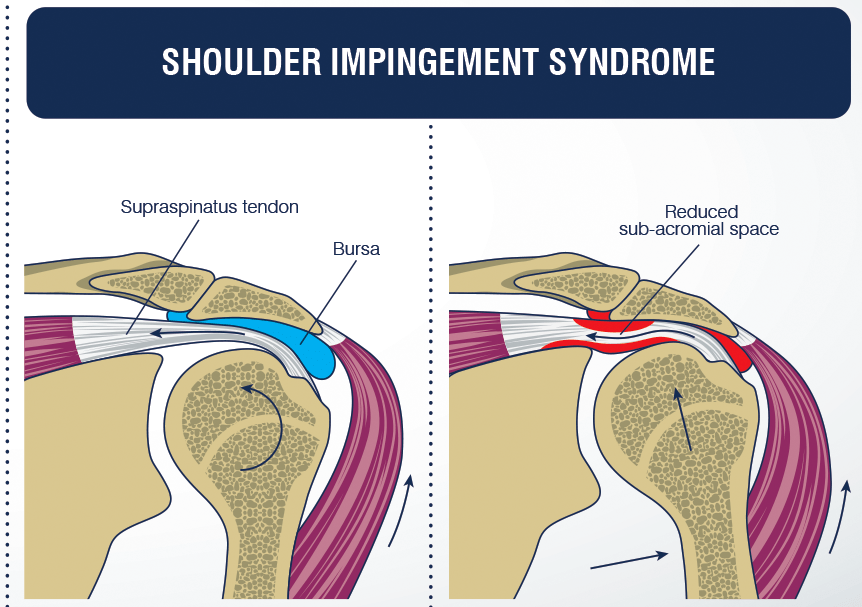Is your shoulder pain caused by impingement syndrome? Read more to find out and learn how physiotherapy can help.
Designed for mobility rather than stability, the shoulder joint is prone to pain. One of the most common conditions of the shoulder is impingement syndrome. Shoulder impingement syndrome is the result of the compression of the soft tissue structures by the bony structures of the shoulder. This compression usually involves the rotator cuff tendons and/or the bursa, the fluid filled sacs within the joint. Therefore, impingement syndrome is often seen in combination with rotator cuff tendinitis or bursitis.
While the exact cause of the condition is not known, generally shoulder impingement is associated with repetitive overhead movements. For this reason, impingement syndrome is common in those whose sports (e.g. swimming) or jobs (e.g. painting) require overhead movements. Because impingement syndrome is an overuse condition, it usually comes on slowly over time, worsening with increased use. Most frequently the pain is felt in the front of the shoulder joint, possibly radiating down the upper arm. Overhead movements, backwards reaching or lying on the affected side triggers the pain, which is often described as “sharp” with a “catching” sensation when lifting the arm.
What can you do at home?
- Prone Ys: Lie face down with your arms up and at a 45-degree angle and thumbs pointed up towards the ceiling. Slowly lift your arms upward, squeezing your shoulder blades down and together. Repeat for 10 reps and 3 sets.
- Pizza Carry: With your back against the wall, bend both elbows to 90-degrees with your palms up. Rotate your arms outward as far as you can while keeping your elbows tucked into your side. You should feel your shoulder blades squeeze down and together. Hold for 5 seconds, for 10 reps and 3 sets.
Why should you see a physiotherapist?
The first thing I can do for you is determine if your shoulder pain is, in fact, caused by impingement syndrome. I will do this by taking a thorough history of your shoulder pain, and then examining your shoulder movements and strength, as well as performing additional tests. Should I confirm a diagnosis of impingement syndrome, I will create a personalized treatment plan tailored to your exact symptoms. The treatment plan will likely including stretches and strengthening exercises to help restore full, pain-free shoulder movement. Additionally, I will use manual therapy techniques and modalities during treatment sessions to further promote the return of pain-free shoulder functioning.
If you are experiencing shoulder pain and want relief book an initial physiotherapy assessment at The Massage Clinic Health Centres today
Alyson Schwichtenburg
Registered Physiotherapist




